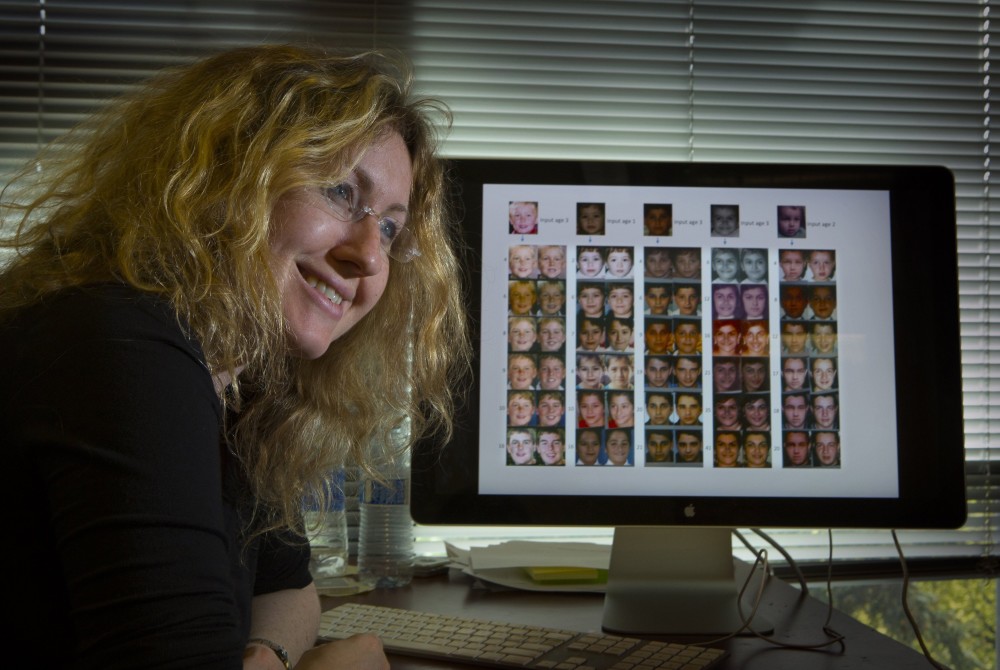By Erik Lacitis
The Seattle Times.
SEATTLE
Let’s assume you are, oh, 25 years old. Wrinkle-free, bag-free, sag-free.
Would you want to see a pretty realistic image of what you’ll look like at age 70?
A little hesitation?
In a couple of months you’ll be able to do just do that.
Just upload a photo of you, at any age, 2, 10, 25, into a free program created at the University of Washington’s Computer Science & Engineering department.
In about a minute, you’ll see the old you. If you dare.
Or put in a photo of anyone.
Certainly, it worked quite well when we tested it with photos of former President Clinton as a kid, and compared what the program said he’d look like now with a real photo of the older Clinton.
We also asked the program to age a number of others, from Miley Cyrus to Russell Wilson to Macklemore, to show them in their 60s.
It showed us what Jimi Hendrix and Kurt Cobain would have looked like had they lived, to 71 and 47 this year, respectively.
No wonder so many plastic surgeons get rich.
But, it turns out that the main researcher who put together this age-progression software has not run her own photo.
“I didn’t do that, no,” says Ira Kemelmacher-Shlizerman, an assistant professor who helped create the program.
She’s 33. It just wasn’t something that interested her, she says.
Not an unexpected reaction, according to pioneering research by Tony Greenwald, a psychology professor at the University of Washington. He’s part of a team that has done unrelated research about how we react to a photo of an old face, versus a photo of a young face. You can take the test yourself online.
“We react more negatively to elderly faces. It makes it clear that being old is not a pleasant thing. Why should we want to know what unpleasantness faces us?” he says.
Kemelmacher-Shlizerman says there will be real uses for the software, such as in helping find long-missing children who’ve now become adults.
Right now, the National Center for Missing & Exploited Children has four full-time forensic-imaging artists who do their best at depicting what a child missing at age 5 might look like at age 25. The center says it has more than 2,000 open, long-term missing cases.
Their artists use Photoshop, pictures of the child’s parents and relatives, and “part science and part art” to create their images of the child at an older age, says a spokesman.
The center says it’s eager to give the university’s program, which is based on the science of imaging, a try.
Kemelmacher-Shlizerman says it turns a face into 4,000 pixels.
A corner of an eye becomes rows of numbers: “141 141 140 139 138 137 136 134 132 …”
In putting together the program, the researchers used photos they found online in which they could determine the age of the person, images from soccer-team photos and beauty competitions, for example.
Over two years, they came up with 40,000 photos. Then they divided the subjects by gender and 14 age groups, and put math to how our faces change over time.
They found that, over time, our faces simply get bigger.
Our eyes get narrower.
Lips get narrower.
Noses get larger.
And, of course, our skin sags, we get wrinkles, and we get bags under our eyes.
The research paper goes into all the math involved, with references to “illumination subspace,” “lighting-aware flow” and “aspect ratio progress.”
Bottom line, the program works very well.
The researchers had people look at computer-generated images of somebody at an older age, versus real images of the person at that age. The participants basically couldn’t tell them apart.
The program even works when the starting image is that of a baby, a much harder task because the face changes so much into adulthood.
In a couple of months, when the program is publicly available, probably on the school’s site, it’ll be a matter of do you or don’t you want to know?
Maybe run that photo of a girlfriend or boyfriend?
Says psychologist Greenwald, “When I got married, and you had asked me if I wanted to know what my wife would look like in 50 years, I probably would have said, no.”
As for you 25-year-olds thinking of giving the program a try, just search for images for Sophia Loren and Cary Grant.
These two movie stars, as they aged, looked fantastic no matter how old they were.
That’s probably not you.














































































































































































































































































































































































